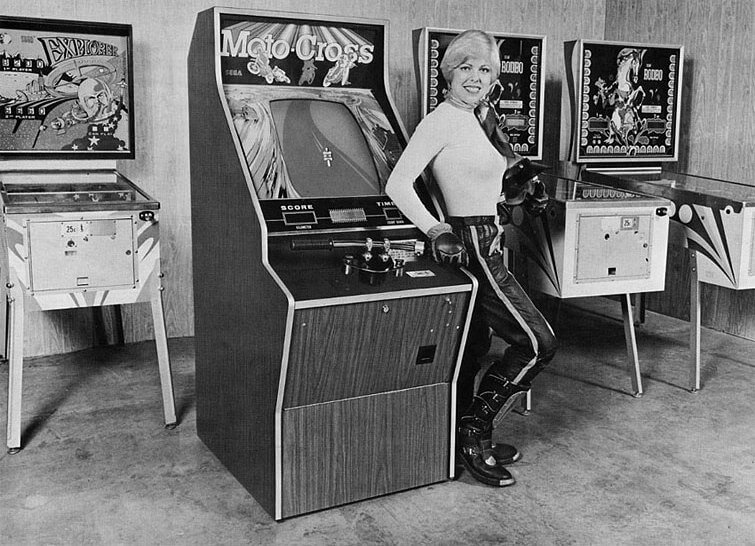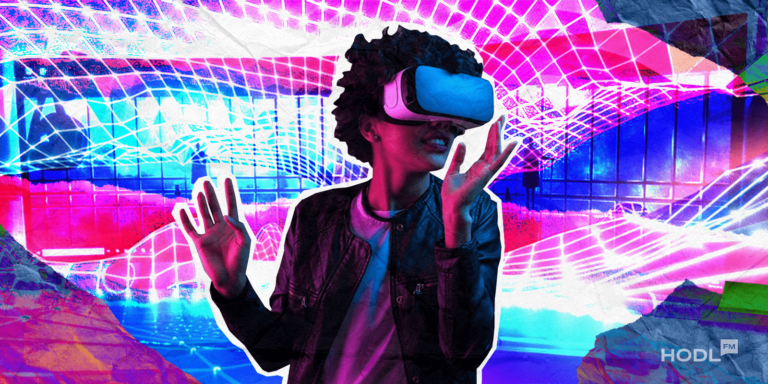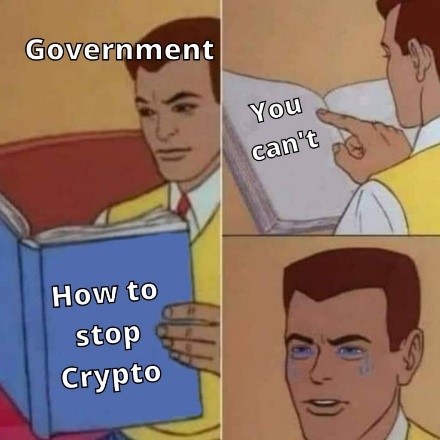A long time ago in a digital galaxy far, far away the idea of Metaverse was born. And since then there’s no rest for those minds that believe in the infinite digital domains and stunning virtual adventures. So if you have ever wondered, how such a technology still hasn’t been adopted by every single company in the world, you need to read this article. Oh, and it’s a perfect topic to impress your crush (less geeky than crypto). Read on, seeker!
Related: Top Metaverse Games of 2024 You Can’t Miss Out On
Metaverse 101: Digital Alternate Reality
The Metaverse represents a unified virtual space blending the physical and the digital realms.
Naturally in the Metaverse, you’ll use the Internet more than just for sending memes to your friends (or to your saved messages if you are a lonely soul). The term “Metaverse” combines “meta” (transcending) and “universe”, referring to a future version of the internet and Web 3.
Related: Web3 and the Metaverse – Stronger Digital Economy
It’s a whole immersive world where you can do all sorts of things: engage in various activities, socialize, and both create or explore virtual landscapes. Think of it as a huge playground where the Internet, virtual reality (VR), and augmented reality (AR) all come together, making it a fun space for everyone to get creative and interact.
How Could I Tell I’m Not Already in the Metaverse?
Wondering if you’ve stepped into the Metaverse?
If you’re truly navigating the Metaverse, you’re:
- Exploring digital landscapes and cities.
- Interacting in social spaces online.
- Representing yourself with a unique avatar.
- Working in virtual offices.
- Gaming in immersive environments.
- Learning in interactive educational spaces.
- Shopping in online marketplaces.
- Attending virtual events and concerts.
- Using cryptocurrencies for purchases, investments, and trade within this digital universe.
Just a Brief Vocabulary of Metaverse
Let’s simplify how the Metaverse works with these key notions:
- Virtual world: Imagine a digital space where you can explore, meet, and interact with others through an avatar. It’s like a video game world but for all sorts of activities. For example, multiplayer online games use virtual worlds to allow participants to create and transfer between spaces. Probably, even Disney worlds soon.
- Virtual reality: VR puts you into a lifelike digital environment using a headset. It’s mainly for games now but is also used in training and meetings.
- Mixed reality: This mixes real and virtual worlds, letting you interact with both. Imagine seeing a 3D model in your real room.
- Augmented reality: AR adds virtual elements to the real world around you, like seeing how new furniture looks in your room through your phone.
- Web3: The Semantic Web is decentralized, distributing data among users. It also features AI, machine learning, openness, freedom, and omnipresence.
- NFT: Metaverses offer endless monetization opportunities in virtual life via NFTs (non-fungible tokens), enabling digital ownership and cross-platform transfers.
When It All Started?
You’d say: “Easy! When the Bitcoin was invented!”. Nope! You’re wrong. Try harder!
Okay, we’re here to learn, not to deepen the mental traumas acquired at school! The timeline of the Metaverse history could be divided into 4 eras:
- Imagination
- Foundation
- Experimentation
- Adoption (we’re here)
Here are the major dates to know:
1838 — C. Wheatstone introduced “binocular vision,” which led to the development of stereoscopes — the illusion of depth to create an image the same as in modern VR headsets.
1935 — Stanley Weinbaum’s “Pygmalion’s Spectacles” describes a pair of goggles that provide sight, sound, taste, smell, and touch.
1956 — Morton Heilig created the first VR machine, the Sensorama Machine.

1990s — 1st VR arcade machines by Sega.

1992 — Neal Stephenson’s novel “Snow Crash” introduced the term “Metaverse”.
2010 — Palmer Luckey’s Oculus Rift VR prototype.
Since 2014 — lots of VR headsets by various tech brands (Samsung, Google, Sony, etc.)
Since 2017, businesses like IKEA, Nike, Gucci, and NERF have ventured into the Metaverse. IKEA introduced its Place app for AR furniture viewing, Nike launched a campaign on Roblox, Gucci sold handbags on the platform, and NERF created NERF City in Fortnite in 2022.
Key Players & Challenges of the Industry
Is it all about Facebook again, you ask? Yes, and no.
In 2021, Facebook rebranded to Meta, shifting its focus to developing the Metaverse, according to Mark Zuckerberg. Meta’s digital world, Horizon Worlds, is accessible via VR and AR and will expand to PCs, consoles, and phones. Meta offers a virtual space for communication, creation, and participation in events, including the ability to create one’s worlds and objects. With this news, the metaverse became the talk of the town. How else could it be, “Facebook is the most used product in the history of the world,” Mark said.
Although Meta was the pioneer in the Metaverse mass adoption, it’s not the only project that aims to build Metaverses.
The idea of Metaverse inspired the creation of META ETF to track companies involved in the Metaverse ecosystem, including virtual and augmented reality. As an ETF, it allows investment in a diverse set of Metaverse-focused assets without direct stock ownership. This is the best possible illustration of the fact that today it’s not just Facebook (sorry, Mark) to be involved in the Metaverse creation.
Hold on!
If such giants as NVIDIA and Apple, are investing in the Metaverse, why isn’t it still available to everyone? In fact, after the rise in 2021, the idea of the Metaverse has somewhat declined, as you can see from the METV ETF price chart below.
Related: Zuckerberg Vs. Apple: Here We Go Again

The reason for that is simple: many companies (pretty much the same actually) invested more in generative AI lately. No wonder, as it’s cheaper! The Metaverse requires significant spending on virtual goods, equipment, and services. Plus ethical dilemmas arise regarding identity, relationships, censorship, and engagement in virtual activities, such as virtual hook-ups and dangerous games. When AI… Oh, that’s GPTChat is already everywhere, really!
However, despite bearish market conditions, there’s continuous development, hiring, and economic activity in the Web3 sector. The market doesn’t lie! Look at the chart above again, it definitely shows steady growth.
For example, Decentraland (a fully decentralized Metaverse project) is focused on performance optimization and developing a new advanced Desktop Client for 2024. In its Manifesto they resolute on becoming more accessible for users and enhancing its VR.
Final Thoughts
Although currently we’re in the Adoption Era of the Metaverse, its milestones are still developing. Many people remain skeptical about this, as they are still about cryptocurrencies.
One thing is clear though: The Metaverse is literally a fantastic breakthrough and an endless stream of possibilities. But still, while exploring infinite virtual realms try not to forget where you parked your spaceship in the real world.
More Info:
- A Guide to Hosting Metaverse Events and the Top Hosting Services
- Artful Adventures in the Metaverse: The British Museum and The Sandbox Team Up
- Mauritius Pioneers the Metaverse in Financial Services
Disclaimer: All materials on this site are for informational purposes only. None of the material should be interpreted as investment advice. Please note that despite the nature of much of the material created and hosted on this website, HODL.FM is not a financial reference resource and the opinions of authors and other contributors are their own and should not be taken as financial advice. If you require advice of this sort, HODL.FM strongly recommends contacting a qualified industry professional.




